- Home
- Diana Wynne Jones
Reflections Page 20
Reflections Read online
Page 20
I have two other powerful reasons for not writing historically. First, as a child I hated overt didacticism in books. We had a long shelf of books that tried to teach you something under the disguise of a story, and we labeled that shelf GODDY BOOKS. My own children felt just the same. Second, one of my sons at about the age of twelve developed a total passion for Kipling’s Kim, which he read over and over again. I was under the impression that, to him, this book was a historical novel re-creating an empire and an India which had disappeared long before he was born. Not a bit of it. When he was fifteen, he confessed that he had thought Kim was a fantasy set in an alternative world and that Kipling had made all the India stuff up. So much, I thought, for inculcating a sense of history. It’s possible that many children regard historical novels as this kind of fantasy. In which they are not exactly wrong.
All the same, I have a strong sense that everything I do write is quite deeply influenced by what I perceive as the Middle Ages. I am grateful for having been asked to speak here. It has made me dig about and find out just what the influence is. It starts with two things dragged from memory.
First, when I was eight, I started reading Malory in the edition my mother had used as an undergraduate. My parents did not really believe in books especially for children, so the language was a bit of a struggle—and the small print—but I read with enormous enthusiasm. Things like “How Sir Lancelot slew three Giants and set a Castle Free” really turned me on. I had got to the middle of “Tristram and Isolt,” when my mother told me sternly that I must remember that knights didn’t really wear armor in King Arthur’s day. This totally bewildered me. “How did they manage then, when they were fighting?” I wondered, and pondered deeply. My ponderings led me to locate that sense that everyone acquires, that there is a “story time” which has nothing to do with history. Story time is when things bizarre or adventurous or enchanted can happen, as in the “Once upon a time” of fairy stories. So of course the knights could wear armor: they were in this story time and it didn’t matter. (I was slightly irritated, as an adult, when I read T. H. White’s The Sword in the Stone and found him painstakingly and patronizingly describing his “story time.” It is something everyone knows about. I just happened to know it consciously rather early on.)
Second, about four years after that, my father suddenly took it into his head to give his daughters an educational trip to the National Gallery in London. He did this sort of thing at arbitrary intervals and usually managed to arrive so late that wherever it was had shut for the day. On this occasion, his timing was off and the National Gallery was actually still open, and we went round. One picture caught my fancy. It was of a little bishop in pink robes appearing over and over again in a rocky landscape. He was obviously being in several places at once, the way saints and other supernaturally gifted folk can be. I was fascinated, because it was so clearly a story time picture. My father, looking over my shoulder, explained that the bishop was wearing the wrong clothes. He was dressed as a medieval bishop would be at the time of the painter, whereas in his real lifetime he would be wearing a toga. My father then led me in front of a huge painting of the martyrdom of St. Sebastian and delivered a lecture on the meaning of the word “anachronism.” I stared at the archer bending down in the foreground of the painting—who, my father stated, should really have been dressed as a Roman legionary—and I stared at the points stretching so tightly across his linen drawers between his hose and whatever held the hose up, and I couldn’t help thinking how uncomfortable this particular medieval fashion must have been—he’d have been better off in a Roman tunic. But it was interesting. It was quite obvious that in the Middle Ages (whenever that far-off misty time was) people conceived of this story time as being contemporary with their own. That made me very wistful at the time because I couldn’t imagine my favorite knight, Sir Gawain, in a suit or tweeds however hard I strained to see it.
This is actually a very important idea. If you are going to write for a non-historical, forward-looking audience, you ideally need the story time to be here and now. I took this idea up with enthusiasm. It is why most of what I write is set in this modern age whenever possible. For instance, writing an early book called Eight Days of Luke, in which the Norse gods appear as modern men and woman and Sleipnir—Woden’s horse—as a large white car chauffeured by a Valkyrie, I was quite consciously imitating what I took to be a medieval treatment of story time.
Anyway, in due course I went up to Oxford and read English, where a large part of the course concerned itself with what was called Middle English—and it is a very odd thing that there were quite a few women who were there at the same time as me—none of whom I met—who all went on to write successfully for children afterward. I have never known what quite inspired them all, but with me I know it was suddenly being confronted with the way writers from the Middle Ages handled narratives. They were all so different, that was the amazing thing, and all so good at it.
Foremost, of course, was the highly sophisticated Geoffrey Chaucer. In The Canterbury Tales you could watch Chaucer show his sophistication by adjusting his style and manner according to who was telling what kind of story. He seems to play with narrative in a way that can be perfectly wicked at times (and I know I thought recently, “Well, if Chaucer can send up tail-rhyme romance in ‘Sir Thopas,’ no doubt out of the same sort of irritation I feel at Californian writers of fantasy, then I can do the same in The Tough Guide”). But with Chaucer, apart from “Sir Thopas,” each of his stories is a serious exercise in a certain type of narrative; he sets boundaries and shows what can be done within them, and without realizing it at the time, I joyfully picked up on this notion. There are fairly severe boundaries set if you write for children—and I don’t mean tedious things like political correctness, which varies from decade to decade, I mean things like not using language that is too complicated and not using those kind of situations in which two people of opposite sexes are sparring for openings or dominance, because most children find both these things puzzling. And you want to give your readers the benefit of your own knowledge of the world without being overtly didactic, as I said. So you see what you can do inside these limits, and usually also, sadly, within certain limits of political correctness—as Chaucer himself says, making a virtue of necessity. And of course you can do a very great deal. It’s a challenge. Chaucer himself only seems to have scratched the surface of what might be done—he didn’t finish the exercise of The Canterbury Tales. I think among what he did do, I admire most his ability to tell a story which is well known—as in “Troilus and Creseyde”—or a story in which it is quite clear what is coming—as in “The Reeve’s Tale”—and still get you to respond as if you had no idea what was coming next. That is something I have tried to do too, and I know the difficulties. But Chaucer is such a deft and elastic writer, so experimental as well as serious, that I at least came away with the feeling that because he so obviously made narrative an exercise of skills, no one was ever quite comfortable telling a straight story again. It wasn’t quite respectable to write a naive narrative like Malory did later. Malory wasn’t respectable and probably didn’t care; he just crashed ahead telling his story in and-and-and chunks, building brick by brick, telling the relevant and irrelevant things in almost exactly the same tone of voice, so that the overall shape was not apparent until he got to the end. But you feel everybody else found they couldn’t do that; they had to make that kind of story at least an allegory, or put in a lot of philosophy. Or something more refined.
Now the beauty of this situation is that it frees up the straight story to be devoted to children. Unfortunately, it also frees it for writers from California to get to work with their quests and Dark Lords—there’s a reverse side to everything. I know I did pounce on this freeing up: I can tell a story because no one else wants to! Oh good.
But then, by complete contrast, I came up against William Langland, who is doing something entirely different and wholly serious and not exactly straight narrati
ve at all. Langland haunts me because he is such a strange mixture of deep thinking and jamming down what happens to be in his head and hoping, then thinking, thinking, taking in another swatch of ideas and thinking again. His work reminds me of the tide coming in: you know how one wave comes frilling up and erases a few footprints in the sand, and then goes back, and the next comes in over the top of it and gets a bit farther, until the sea is right up where the deep footprints and the ice-cream papers are. Langland seems to me quite as inexorable, and he covers pretty well everything in his way. And at the end of Piers Plowman the tide goes out again. Damn! Still haven’t quite got to the seawall. Have to go out and look for Piers again. What has always impressed me here is what you can achieve if you get behind your narrative (or as-it-were narrative) and really push. The ideas start to run about over the top of it, interlaced like the foam on the top of waves. The first thing Langland taught me is that ideas are just as important as a story—I hadn’t grasped that before then. The next thing was slightly more accidental, that is the way what you are saying and how you are saying it are very closely linked. I don’t know if anyone here has ever tried to write Langland’s kind of alliterative verse. I had a go once or twice. It’s not easy. You find, unless you are violently inventive about it, that the form forces you to go back and repeat the latest half line at the beginning of the next line, only in different terms. Langland is good enough at it that he doesn’t do this much, but the impulse is there and contributes to the overlapping, wave after wave, tide-coming-in nature of the narrative.
Learning a little from this, I discovered that I always had to let the book I was writing find its own style. Only in that way can you be sure that you are doing the right thing by your subject matter. It’s a strange feeling, as if the book has a life of its own.
Of all the writers I discovered as a student, Langland gets under my skin most—witness the way I called my two griffins Kit and Callette. A long time ago, I wrote a novel that was based on Piers Plowman. Oh dear. Publishers to a man and woman sent it back to me on the grounds that the main character was not present at the most important parts of the action. Quite true. Probably only Langland could get away with something like that. Much later, I wrote another book called Fire and Hemlock, in which I tried not to make that mistake and in which I got behind the narrative and pushed, Langland fashion. Langland lies behind that particular book in a way I find it hard to define, even more than the ballad of “Tam Lin” or T. S. Eliot’s Four Quartets, which are present in the foreground (possibly rather as the Bible and prayer book were to Langland—or so I hope). I think it is in the movement of the narrative that his influence lies, but I am not sure. It is orchestrated in a tidelike advance and retreat, full of partial repetitions, where some things acquire a new meaning at each advance. Or so I hope.
On the other hand, when I think about learning to orchestrate a narrative, particularly the more ordinary, clipping style of narrative, I realize that I learned that from the Gawain poet. He has it down absolutely in Sir Gawain and the Green Knight. He knows when to pass quickly over time, and when to dwell on episodes. That is, he knows when to just tell you things were so and when to make you feel them so in your gut, and he knows what action to dwell on, and what colors, noises, details to highlight (or show in close-up); when to give direct speech, when indirect; and, even more important, how to balance the mixture out, so that the story is never overweighted in the wrong place. This is all the organizational stuff that Jane Austen had laboriously to teach herself when she rewrote Pride and Prejudice using an almanac. The Gawain poet has got it all. I think I use him as a sort of paradigm narrator all the time. Furthermore, he backs up my discovery in the National Gallery by having his story time in his own present time, really. His magical characters live in an up-to-date modern castle, with all the latest architectural features. I think my Chrestomanci books owe quite a lot to this.
I’ll pass over Robert Henryson. I never got on with him. But there is one other work from within the time I think of as the Middle Ages, which almost did more than teach me—it came as a revelation—and that is “Sir Orfeo.” This is a work that, alas, lies behind quite a lot of the Californian quest stories and any modern Pre-Raphaelitism (which is still alive too, and living in California, where writers make romantic stories about elves and mist and dim blowings and things) and it is, of course, a romantic poem. I never could work out whether the person or persons who wrote it knew what they were doing or not. At any rate, the reason I found it such a revelation was that it was the story of Orpheus and Eurydice, which is the kind of story you might call “hard myth” (on an analogy with “hard science fiction,” meaning the crystal-clear, nitty-gritty, no-nonsense kind) which has been transmogrified into, as it were, “soft myth,” as a story of fairyland and enchantment. Orpheus goes to Hades. Sir Orfeo has to negotiate with something hazier, possibly with wider powers than a mere god of the dead—something that can grab you at midday if you sleep under a certain kind of tree. Until I read this poem, I hadn’t realized that this sort of translation from one type of story to another was possible. Once I did realize, I did some furious thinking, lasting for about ten years, and came up with the discovery that translating need not apply only to types of story. You can make other kinds of translation as well, all equally useful and all equally telling. The other kinds I began to use straightaway and almost habitually. Are there minorities persecuted for physical facts they can’t help? Then translate those minorities into witches who develop at puberty powers they can’t suppress and get burned for it. Or I wanted to write about children of divorced parents whose mother remarries. Translate the problems these children have into magical or alchemical misadventures. Or a boy struggling into adolescence in the face of an unkind family? Have the boy’s feelings appear in the shape of the Norse gods. But in all these instances you must not cheat. You must have the magical occurrences strongly effective in their own terms. They must leave their mark on the everyday life of the characters in the story, just as “Sir Orfeo” hangs together consistently in terms of faerie rather than Hades.
Oddly enough, it took me a while to learn to translate an actual story. I suppose I began doing it with Charmed Life, which is really what they call a Gothic Romance reversed—young heroine defenseless in frowning Cornish castle ruled by a flinty-hearted macho lord—only in this case the young heroine is a sort of fifth column for an attack on the castle and most people are defenseless before her. By then I was up and running and did it again with Howl’s Moving Castle—fairy-story heroine goes bravely to castle to rescue prince under enchantment—except that in this case they rescue one another, quarreling fiercely while they do. And in Hexwood I had real medievalizing fun translating chunks of Arthurian stories into a story about a super-computer.
Actually, I find I have abashed myself considerably by comparing the things I do with these masterpieces out of the past. What I am really trying to describe are the things I found in the Middle Ages and what they meant to me. I think the Middle Ages invented me, rather than the other way round. And I’d like to conclude with telling you about the lady in Australia. I was in Sydney giving a talk and the lady came up to me saying she was writing a study of a book of mine called The Magicians of Caprona. I enjoyed writing that particular book. I got the name Caprona from Dante (another borrowing from the Middle Ages), and like Chaucer and Shakespeare after him, I’d cheerfully borrowed the story of Romeo and Juliet and put it in there. What the lady said to me was, “Pardon me, is your intertextuality intentional?” I said, “Your what?” And she said, “Did you know that you’ve put the story of Romeo and Juliet into your book?” “Oh that,” I said. “Yes, of course.” It seemed extraordinary to me that anyone could think that one could write anything without being heavily indebted to things that had gone before—and not know it. What I want to say is, yes, I do know really where I’m getting it from, and it is intentional, and very grateful I am too.
Some Truths About Writing
&nb
sp; This was a talk given at the Children’s Books Ireland conference in May 2002. Children’s Books Ireland aims to create a greater understanding of the importance of books for young people.
The reason I gave this talk the title I did is that I found myself wanting to do something I have never seen properly done before, and that is to try and tell at least some of the truth about the way one actually writes a book—to describe what people call “the creative process” in fact.
This is something writers are always being called upon to do, usually for radio interviews. And I never listen to one of these without thinking, “She’s lying!” or “He’s saying what he thinks they want to hear.” Or just, “The same old guff!” For of course I have said the same kind of things myself—a sort of rash approximation to what the truth appears to be, along with a few spiky little insertions, usually to the effect that this particular thing really happened, or that thing was taken from real life, so that interviewer and listeners don’t run away with the idea that fantasy has no connection with actual mundane existence. Most interviewers seem to me to have left both real life and fantasy so far behind that one is at a loss to know where they do stand. Some kind of media virtual place, perhaps. And, desperate to contact this person and to please them—and, above all, not to let oneself down in public—one produces something that sounds as if it might be true.
I had a bit of fun with this process in a story called “Carol Oneir’s Hundredth Dream.” Carol is a twelve-year-old professional dreamer who suddenly finds she is suffering from, as it were, dreamer’s block. She goes to the enchanter Chrestomanci to get this sorted out. Having pried away Carol’s pushy mama, Chrestomanci invites Carol to tell him exactly what she does when she makes a dream.

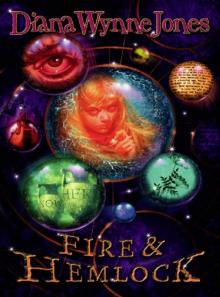 Fire and Hemlock
Fire and Hemlock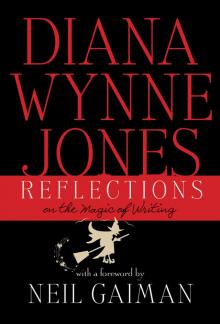 Reflections: On the Magic of Writing
Reflections: On the Magic of Writing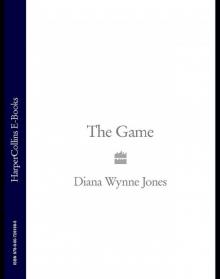 The Game
The Game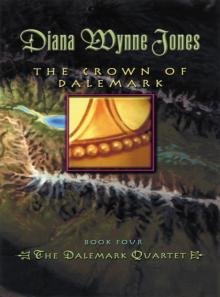 The Crown of Dalemark
The Crown of Dalemark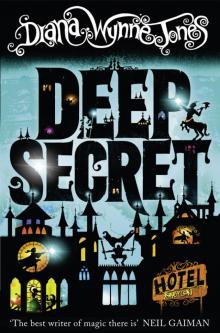 Deep Secret
Deep Secret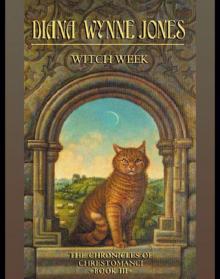 Witch Week
Witch Week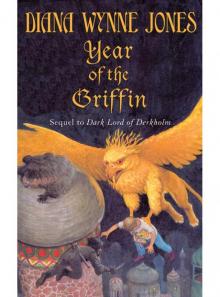 Year of the Griffin
Year of the Griffin Wild Robert
Wild Robert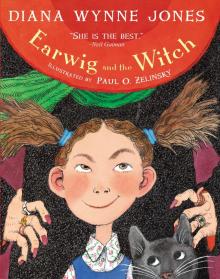 Earwig and the Witch
Earwig and the Witch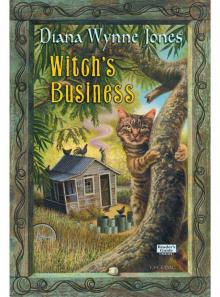 Witch's Business
Witch's Business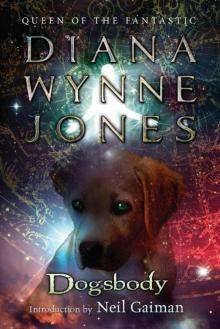 Dogsbody
Dogsbody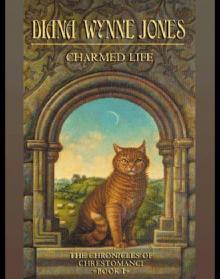 Caribbean Cruising
Caribbean Cruising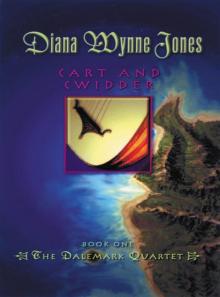 Cart and Cwidder
Cart and Cwidder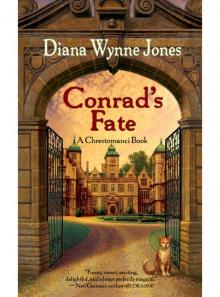 Conrad's Fate
Conrad's Fate Howl's Moving Castle
Howl's Moving Castle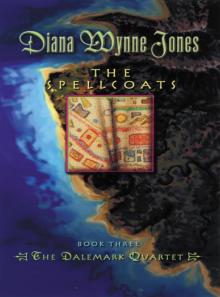 The Spellcoats
The Spellcoats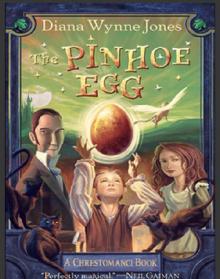 The Pinhoe Egg
The Pinhoe Egg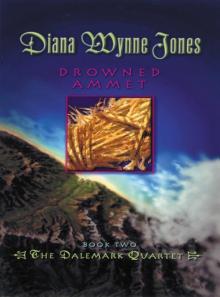 Drowned Ammet
Drowned Ammet The Ogre Downstairs
The Ogre Downstairs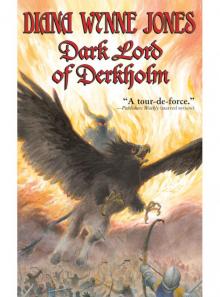 Dark Lord of Derkholm
Dark Lord of Derkholm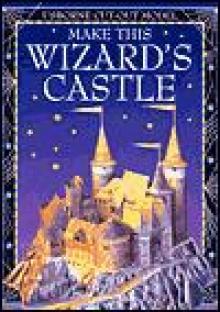 Castle in the Air
Castle in the Air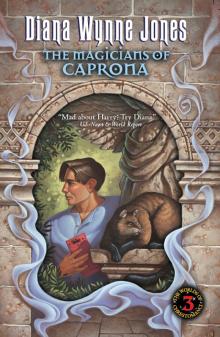 The Magicians of Caprona
The Magicians of Caprona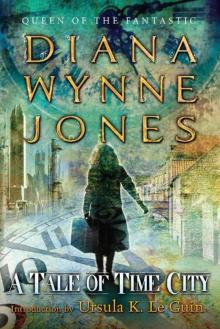 A Tale of Time City
A Tale of Time City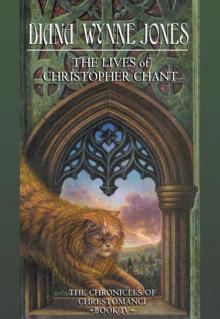 The Lives of Christopher Chant
The Lives of Christopher Chant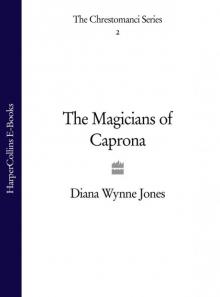 The Magicians of Caprona (UK)
The Magicians of Caprona (UK)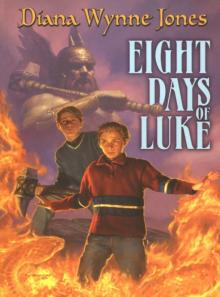 Eight Days of Luke
Eight Days of Luke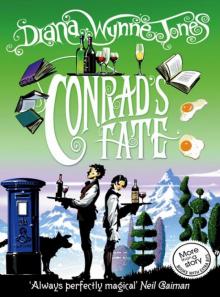 Conrad's Fate (UK)
Conrad's Fate (UK)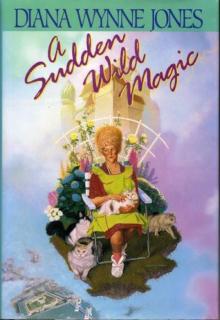 A Sudden Wild Magic
A Sudden Wild Magic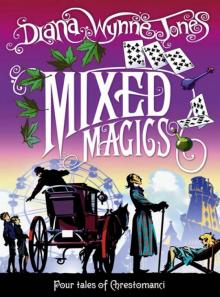 Mixed Magics (UK)
Mixed Magics (UK)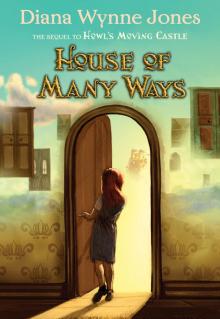 House of Many Ways
House of Many Ways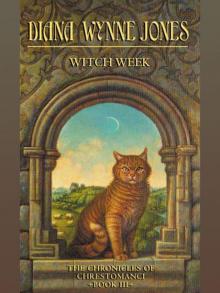 Witch Week (UK)
Witch Week (UK)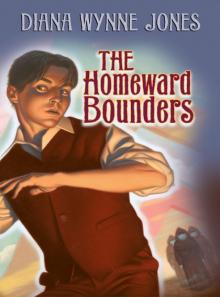 The Homeward Bounders
The Homeward Bounders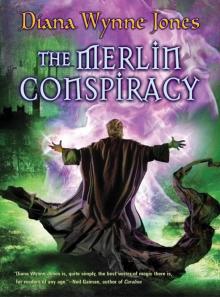 The Merlin Conspiracy
The Merlin Conspiracy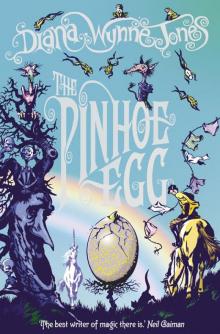 The Pinhoe Egg (UK)
The Pinhoe Egg (UK) The Time of the Ghost
The Time of the Ghost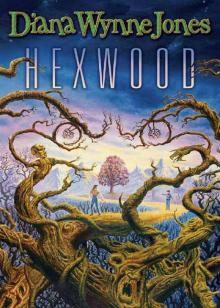 Hexwood
Hexwood Enchanted Glass
Enchanted Glass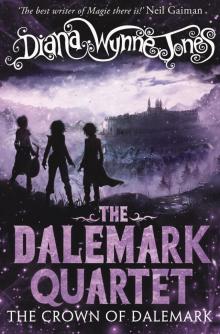 The Crown of Dalemark (UK)
The Crown of Dalemark (UK)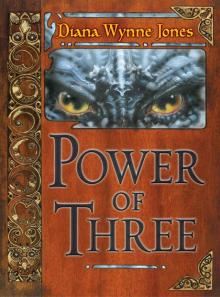 Power of Three
Power of Three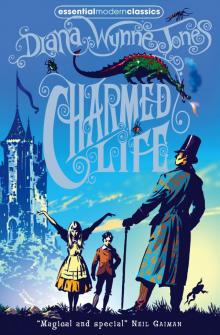 Charmed Life (UK)
Charmed Life (UK)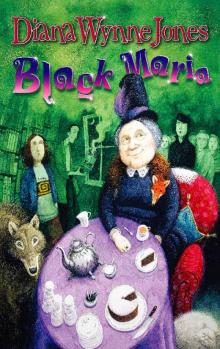 Black Maria
Black Maria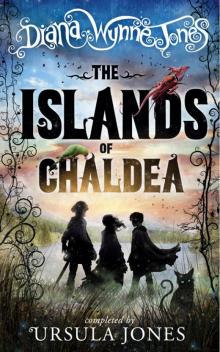 The Islands of Chaldea
The Islands of Chaldea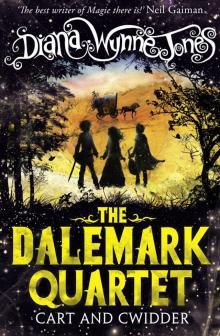 Cart and Cwidder (UK)
Cart and Cwidder (UK)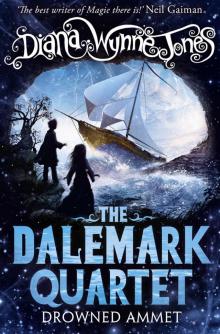 Drowned Ammet (UK)
Drowned Ammet (UK)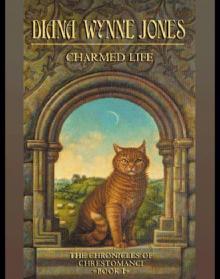 Charmed Life
Charmed Life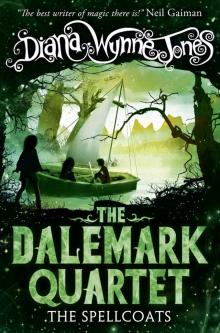 The Spellcoats (UK)
The Spellcoats (UK)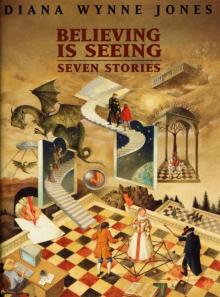 Believing Is Seeing
Believing Is Seeing Samantha's Diary
Samantha's Diary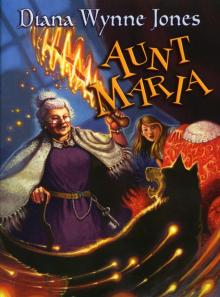 Aunt Maria
Aunt Maria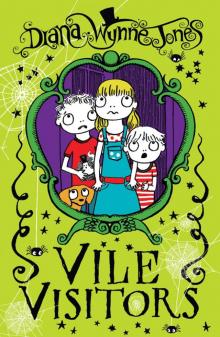 Vile Visitors
Vile Visitors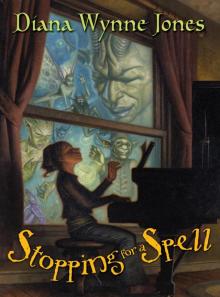 Stopping for a Spell
Stopping for a Spell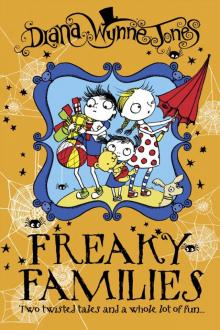 Freaky Families
Freaky Families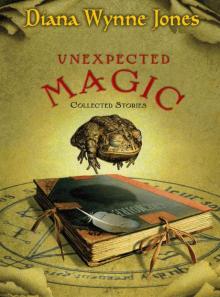 Unexpected Magic
Unexpected Magic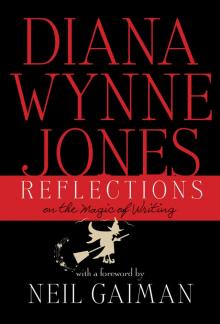 Reflections
Reflections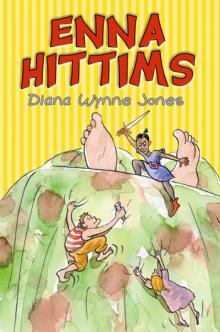 Enna Hittms
Enna Hittms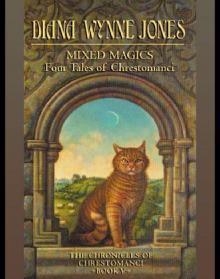 Mixed Magics: Four Tales of Chrestomanci
Mixed Magics: Four Tales of Chrestomanci